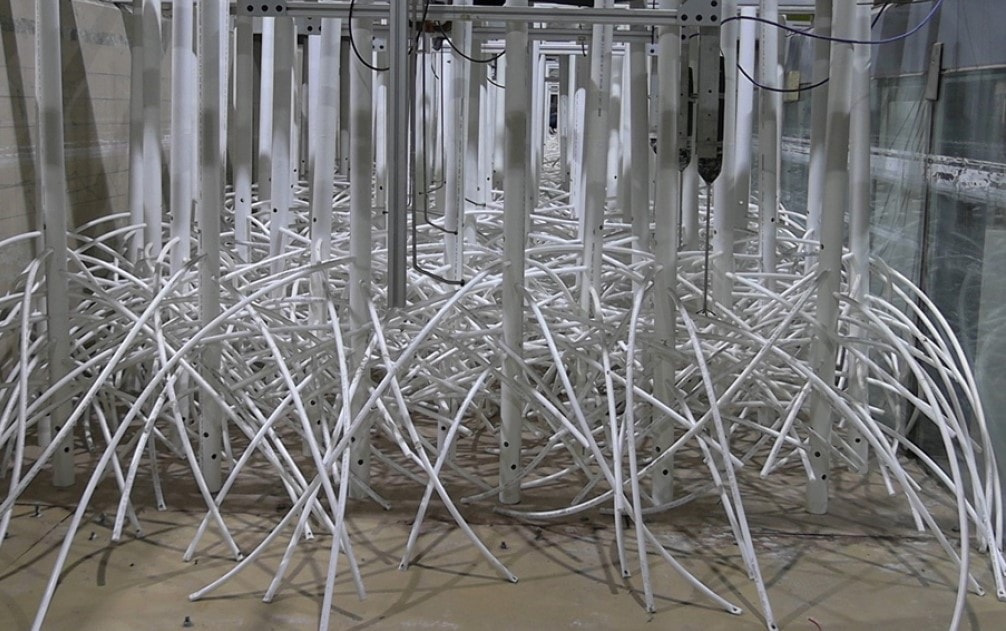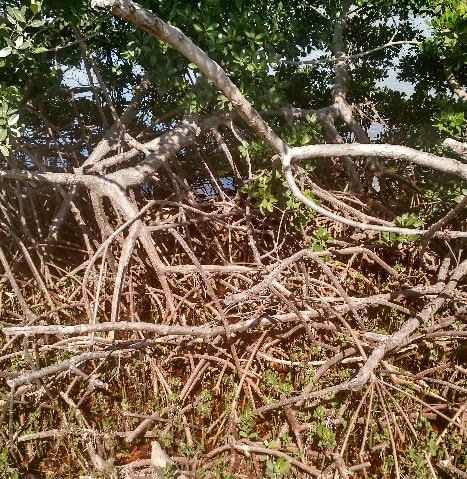A physical model study investigating the dissipation of wave energy by a 1:2.1 scale North American red mangrove forest was performed in a large-scale flume. The objectives were to measure the amount of wave attenuation afforded by mangroves, identify key hydrodynamic parameters influencing wave attenuation, and provide methodologies for application. Seventy-two hydrodynamic conditions, comprising irregular and regular waves, were tested. The analysis related the dissipation to three formulations that can provide estimates of wave attenuation for flood risk management projects considering mangroves: damping coefficient β, drag coefficient C𝐷, and Manning’s roughness coefficient 𝑛. The attenuation of the incident wave height through the 15.12 m long, 1:2.1 scale mangrove forest was exponential in form and varied from 13%–77%. Water depth and incident wave height strongly influenced the amount of wave attenuation. Accounting for differences in water depth using the sub-merged volume fraction resulted in a common fit of the damping coefficient as a function of relative wave height and wave steepness. The drag coefficient demonstrated a stronger relationship with the Keulegan–Carpenter number than the Reynolds number. The linear relationship between relative depth and Manning’s 𝑛 was stronger than that between Manning’s 𝑛 and either relative wave height or wave steepness.



